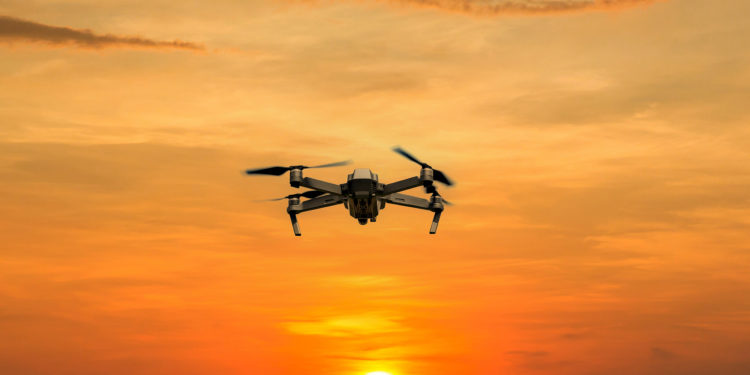A patent application published last month suggested that Apple was working on its own drone. Now two more patent applications related to drones have surfaced. The interesting thing is that Apple tried to keep the patents secret.
Patent applications are actually a public matter that is difficult to keep secret. Apple patents in particular are scrutinized very closely. There are actually only two ways to keep patents secret. Firstly, companies can sometimes delay the publication of a patent application. The alternative is to file the application outside the USA. As a US company, Apple usually files its patents with the US Patent and Trademark Office (USPTO), so this database is searched first for clues.
Apple drone patents: Application first filed in Singapore
Patent applications filed in other countries are less likely to be discovered. But in Apple's case, that's exactly what happened. As Patently Apple reported, Cupertino originally filed the two patent applications, which deal with a drone, in Singapore and not in the USA.
Apple originally filed the project in Singapore in May 2020 under the number 10202004252X to keep it secret. A second drone patent application was also originally filed in Singapore under the number 10202002204W.
The first relates to methods for coupling and decoupling drones with controllers. The patent description is, as usual, very complex. In terms of content, however, it seems to be about how to pass control of a drone from one controller to the next. The transfer is presumably supposed to take place during a flight.
Devices, systems, and methods for coupling/uncoupling unmanned aerial vehicles (UAVs) to/from UAV controllers (UACs). A UAV and/or a UAC may initiate a coupling/uncoupling of the UAV to/from a host UAC based on a triggering condition and receive a configuration update from a network that may confirm the coupling/uncoupling of the UAV to/from the host UAC. The triggering condition may be the drone moving away from a location controlled by the host UAC, the drone moving to a location where the host UAC cannot control the drone, and/or the host UAC losing its signaling capability. The configuration update may include at least one of the following information: a reason code, an identifier for the drone, an identifier for the host UAC, an identifier for an unmanned aerial system (UAS).
Apple Patent: Could the drone be controlled via a cellular network?
The second patent, on the other hand, relates to the remote control of a drone via a cellular network. The patent description states the following:
Devices, systems, and methods for tracking and/or controlling unmanned aerial vehicles (UAVs) and for tracking UAV controllers (UACs) within a cellular network. A UAV/UAC can communicate tracking information to a cellular network, such as speed, orientation, altitude, C2 communication quality, C2 communication mode change request, measurement report, RRC status, cell ID, TAC ID, the current location of the UAV, and the destination of the UAV. The network can forward this information to an unmanned aerial system traffic management system (UTM). The UTM can use the tracking information to decide, among other things, whether to transfer control of the UAV from the UAC to the UTM. In some embodiments, the UAV/UAC can cause the UTM to transfer control of the UAV from the UAC to the UTM.
According to this, Apple seems to be researching drone technology or even working on its own drone. Whether the product is planned for the mass market? We don't know, of course. Apple is known to register many patents. But only a few ideas are actually implemented in the end. So whether we will ever see an Apple drone remains to be seen. Do you already know the early Black Friday deals on Amazon? Stop by, there are dozens of bargains to be found. (Photo by kckate16 / Bigstockphoto)





